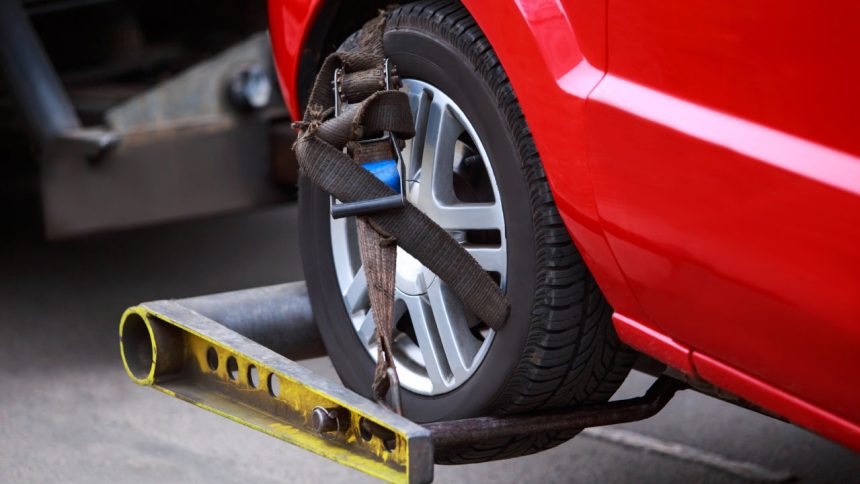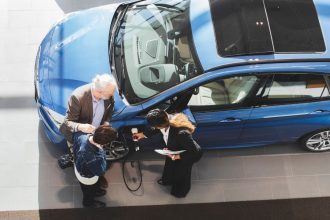Key takeaways
- If your car is disabled while on the road, towing and labor coverage can offset the cost of towing, on-site labor or lockout and jump-start services.
- Towing and labor coverage can be added to a full coverage auto insurance policy for a small premium.
- Unlike roadside assistance, towing and labor coverage is tied to your auto insurance.
Once you’ve covered the basics with your auto insurance — liability, collision and comprehensive coverage — it’s time to consider any endorsements you may want to add. A common addition to full coverage car insurance policies is towing and labor coverage, an endorsement that allows drivers to claim the cost of towing, fuel delivery and similar services when an insured vehicle breaks down while on the road.
What does towing and labor coverage include?
Towing and labor coverage is a type of optional endorsement offered by many insurance companies for full coverage auto insurance policies. Similar to roadside assistance, towing and labor coverage can help to offset the cost of a tow truck and other emergency assistance if your insured vehicle breaks down away from home.
A towing and labor cost endorsement may cover all or some of the following:
- Towing
- Jump starts
- Gas or oil delivery
- Tire changes
- Lockouts
- Winching
- Labor costs associated with emergency roadside repairs
Coverage and limits can vary significantly from company to company. It’s worth noting that your collision or comprehensive insurance might include the cost of towing if your car is disabled due to a covered loss, but towing and labor coverage may address more circumstances in which you need a tow.
How do towing and labor coverage limits work?
Just like what’s covered by towing and labor coverage may vary by carrier, you may also see different limits on your coverage depending on your insurer’s policies. Your insurance company may put limits on:
- The amount you may be reimbursed for towing and labor expenses
- The number of times per year you may use your towing and labor coverage
- The number of miles your towing coverage applies to
If you hit your towing and labor coverage limits and have additional expenses or run into another breakdown, you may need to cover the cost of tow services and other emergency assistance out of pocket or turn to a traditional roadside assistance membership.
What does towing and labor coverage exclude?
The “labor” in the name of towing and labor coverage highlights the fact that the coverage applies to the repair work done, but won’t extend to the cost of parts needed for roadside repairs. In other words, if you blow a tire on your drive home and don’t have a spare, you won’t be reimbursed for the cost of the tire itself. If you run out of gas, towing and labor coverage might pay someone for the time and labor required to bring fuel to you, but you’ll pay for the gas.
Why auto insurance excludes certain repair costs
Car insurance is designed to help vehicle owners weather the financial impact of unexpected events, particularly those outside of their control. That’s why an insurance company may pay for repairs if you’re struck by another car, if you hit a deer or if your car hits black ice and rolls over (depending on your coverage selections).
However, insurance can’t cover all of the risks associated with car ownership, and mechanical breakdowns caused by normal wear and tear, user error or negligence are a major exception to car insurance coverage in most cases. Towing and labor coverage allows you to pass a small portion of this type of risk onto your insurer by asking for emergency assistance in towing your car to a place where it can be repaired if it breaks down while on the road.
Is it worth having towing and labor coverage?
Towing and labor coverage might be worth it if:
- You drive an older car: If your vehicle is at an age where mechanical breakdowns may become more likely, towing and labor coverage could pay off in an emergency.
- Your car insurance budget is flexible: Towing and labor coverage is usually an inexpensive add-on, so it might be a good investment if you don’t mind paying a little more each month.
- You drive a lot: If you’re putting a lot of miles on your car for work or leisure, having towing and labor coverage in your back pocket can help you prepare for unexpected emergencies.
Towing and labor coverage might not be worth it if:
- You don’t want full coverage: You’re generally required to have comprehensive and collision coverage before you can add towing and labor coverage to your policy. If you’re sticking with a liability-only insurance policy, you may want to look at alternative options for roadside assistance.
- You want the added perks of a roadside assistance membership: Towing and labor coverage is practical and cheap, but its benefits are often fairly sparse. A roadside assistance membership with an organization like AAA usually costs more, but grants additional perks like travel planning and discounts.
- You want to avoid claims: Using your towing and labor coverage constitutes a claim on your insurance policy, which can cause your rates to increase in the future.
If you’re considering towing and labor coverage, you may also want to weigh the pros and cons of other full coverage add-ons, such as rental car reimbursement insurance.
Towing and labor cost coverage vs. roadside assistance
The biggest difference between towing and labor cost coverage and roadside assistance is that the former is an endorsement on your car insurance policy, linking it directly to your insurance. There are benefits to that — for instance, the coverage is often cheaper — but it also means that using your coverage may result in rate increases. Roadside assistance typically operates as a separate service that won’t impact rates, but it may be more expensive.
| Towing and labor coverage | Roadside assistance | |
|---|---|---|
| What is it? | Optional endorsement for full coverage car insurance | Paid service available through insurers, automakers and AAA |
| What’s included? | Towing, jump starts, fuel delivery, lockouts, tire changes, winching, on-scene labor (varies by provider) | Towing, jump starts, fuel delivery, lockouts, tire changes, winching, on-scene labor, trip interruption benefits (varies by provider and membership level) |
| What does it cost? | Typically cheap to add | Can range from cheap to expensive |
| Can it raise your insurance premium? | Yes | No |
| Does it follow the car or the driver? | Follows the car | Follows the driver |
Frequently asked questions
Read the full article here














